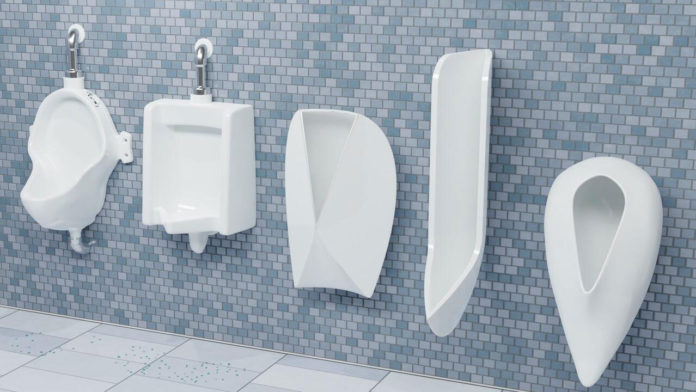Think you could design a better urinal? University of Waterloo students set out to do just that, and after five years they have come up with their (ahem) number one design.
Urinals are a common fixture in public washrooms, and they come with a lot of benefits. Compared to a standard toilet stall, they consume less water, occupy a smaller footprint, and are faster to use.
But they can also cause a mess when urine splashes back, which is pretty common with today’s urinal designs.
Zhao Pan, assistant professor of mechanical and mechatronics engineering at the University of Waterloo, led a multi-year project aiming at a splash-free urinal design. He was joined by undergraduate students working under his supervision, and collaborators at Weber State University in Utah.
“This urinal design project is the best teaching tool I can think of, as it is a daily-life problem that covers numerous topics — including fluid mechanics, sustainability, differential equations, manufacturing and prototyping, art, industrial design, human factors, bio-mechanics and testing,” said Pan in a press release.
To create a urinal design that could eliminate splashes, the team drew inspiration from nature. They noted that dogs instinctively lift a hind leg to urinate against trees instead of peeing straight down onto the ground; this naturally minimizes the impact angle of the stream.
Using a combination of physical experiments and computer modeling, the team found that a liquid stream doesn’t produce splatter if it hits a surface at an impact angle smaller than 30 degrees.
So they set out to design geometry that would keep the impact angle below this critical angle. They experimented with various designs fabricated from epoxy-covered foam. For comparison, they also fabricated a model based on a standard commercial urinal, with its flat rectangular design, as well as a replica of a design from 1917.
After spraying jets of dyed water at varying speeds, the researchers mopped up any splatter using paper towels. The wet and dry weights of the paper towels was compared to quantify the amount of splatter.
Dubbed the Nauti-loo, their chosen design is tall and thin, with a narrow curved opening and a J-shaped profile that mimics the shape of a nautilus shell. It reduces the amount of splatter to almost nothing and it works for users across a wide range of heights no matter how well they aim.
Not only is this a positive for users, it’s also a benefit for the environment. Public washrooms would stay cleaner on their own, requiring less labour, water, and cleaning supplies to be kept fresh and dry.
Through a fun, everyday problem, this project has inspired students to use their creativity towards a practical solution.







































